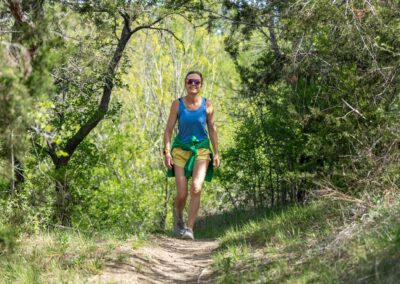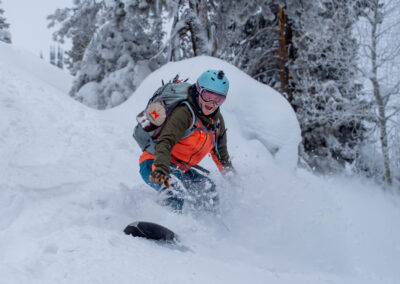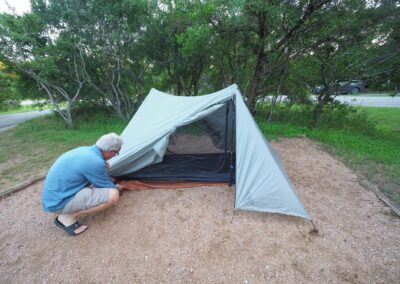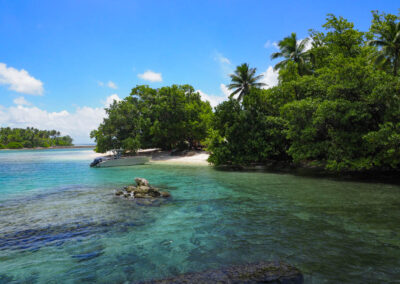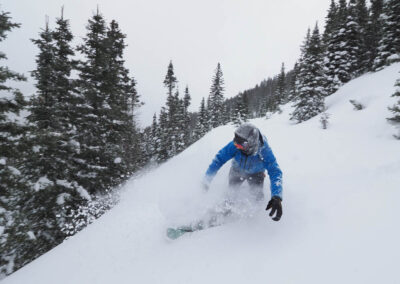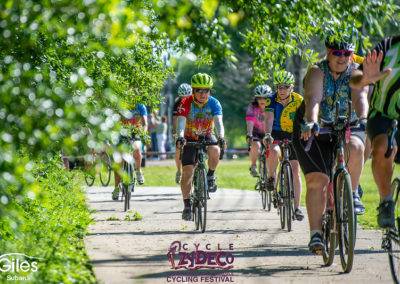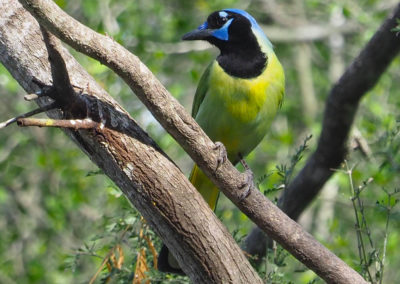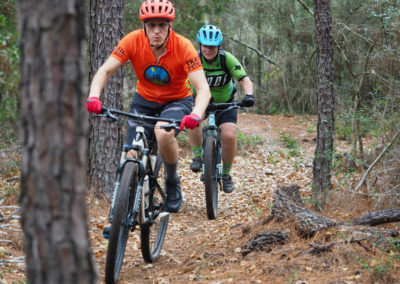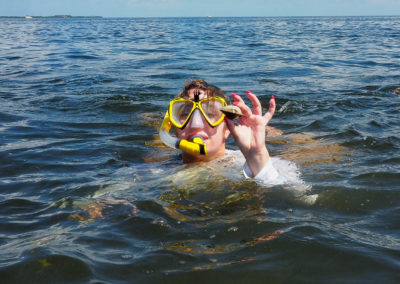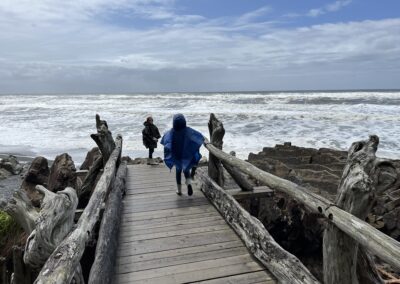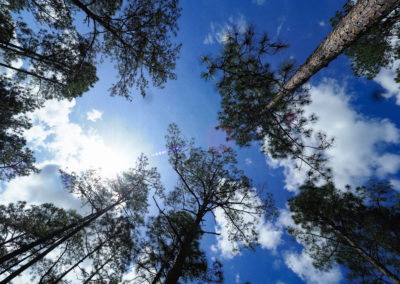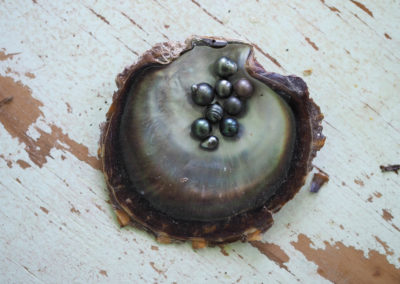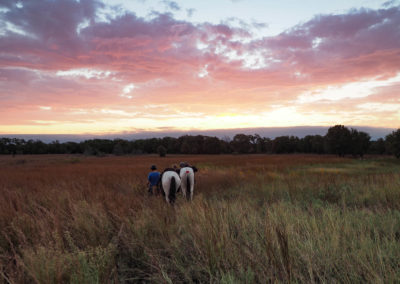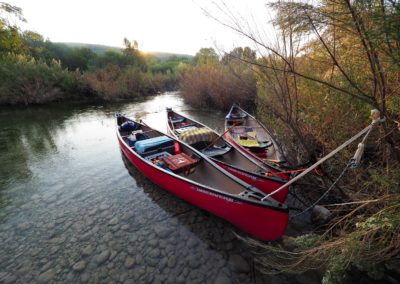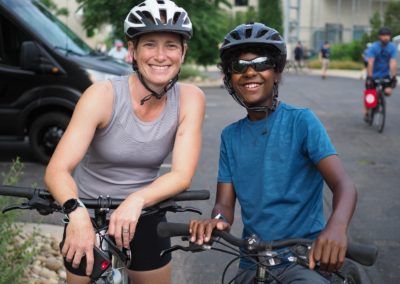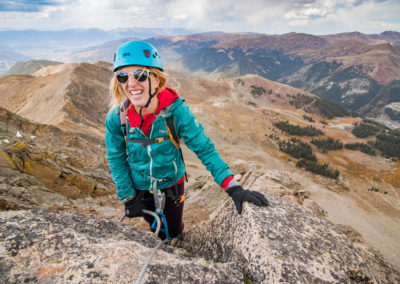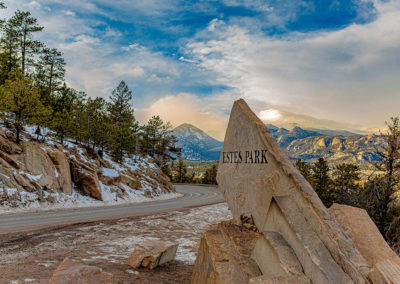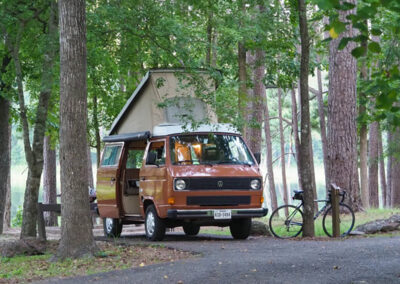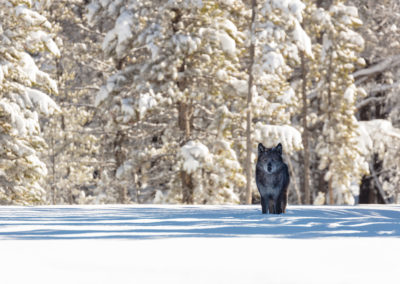Nine stilt houses rise from the water off the Pasco County coast in Florida. The Lake family this one with an American flag mural at one end. Pam LeBlanc photo
It’s getting harder to find remnants of Old Florida these days, but the fishing camps that stand on spindly legs off the Pasco County coastline offer a nostalgic glimpse into the past.
A century ago, anglers who needed a place to stash their catch and seek shelter during storms built small structures over the shallow water near the mouth of the Pithlachascotee River. At one point, as many as two dozen small cabins balanced on wooden stilts about a half mile offshore in the Gulf of Mexico. Over time, though, hurricanes, fires, and time took their toll. Today, just eight of the stilt houses remain.
Related: Fishing, golfing and more in the Santee region of South Carolina
I capped off a trip to Florida this week with a visit to one of the stilt homes, owned by two brothers and their wives – Brian and Shannon Lake and Greg and Christina Lake.
A visit to one of the stilt houses
The Lake’s stilt house has a wraparound porch and an American flag mural. Pam LeBlanc photo
It took about an hour to reach the house, known for its large American flag mural, by pontoon boat from a dock in New Port Richey. Once there, the Lakes welcomed us to their home and told us a little about its history.
The original stilt houses were built between 1916 and 1918. Today, state law prohibits the construction of new stilt homes, but these were grandfathered in by the Florida Legislature. Existing structures can be repaired, depending on how extensive the damage.
The owners told us that Johnny Cash and his wife June Carter Cash were frequent visitors to one of the nearby houses when they were still alive.
The original home at the Lake’s site – known as Camp 6 – was destroyed by what locals call the No Name Hurricane in 1993. Because the pilings of that original camp remained, the homeowners were allowed to rebuild. Then, four years ago, the renovated structure was hit by lightning and burned. The Lakes again received permission to rebuild.
Growing up in one of Florida’s stilt houses
“As a kid we just had fun, went fishing, caught crabs and hung out with my dad,” Brian Lake says of spending time at the house as a kid. “We had a good time here.”
The one-room structure has walls that swing open to let in the sea breeze, three beds, and a wraparound porch. The Lakes own the building and pay a “submerged land lease” for the watery lot. The best part of owning the house, Brian Lake says, is sharing it with others.
There is no running water (we peed in a bathroom set up with a toilet seat perched atop a hole that opens into the ocean) and used ice instead of a refrigerator.
We ate fresh-caught scallops at one of the stilt houses on Florida’s west coast. Pam LeBlanc photo
The houses are privately owned and not open to the public, but anyone can motor past them in a boat. We were thrilled to get an invitation to The Lake’s house, which provided the perfect old-Florida backdrop for dinner on the last night of my recent trip to Florida. Our group of about a dozen ate at a long table on the porch, nibbling scallops we caught that morning as the sun dropped in the sky.
That view, I’m sure, is one thing that hasn’t changed since those fishermen first built these homes.
The view of sunset from Pasco County’s stilt houses is stunning. Pam LeBlanc photo









